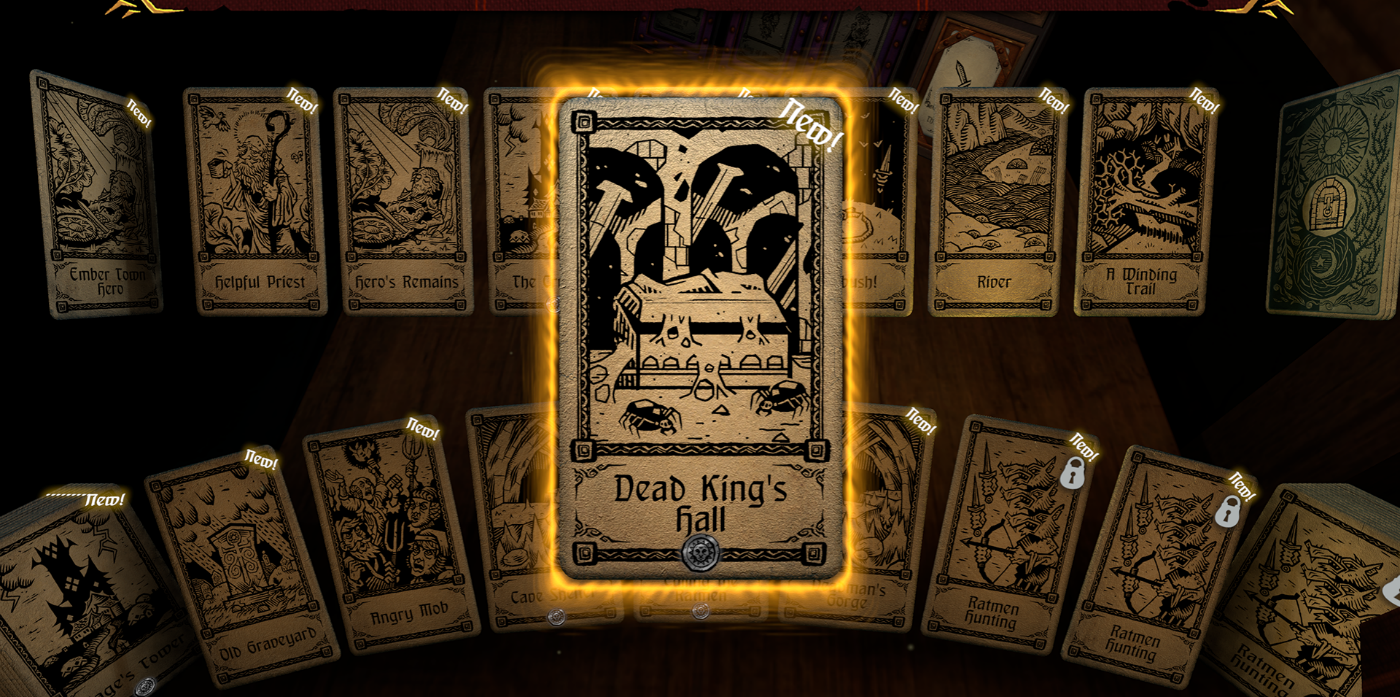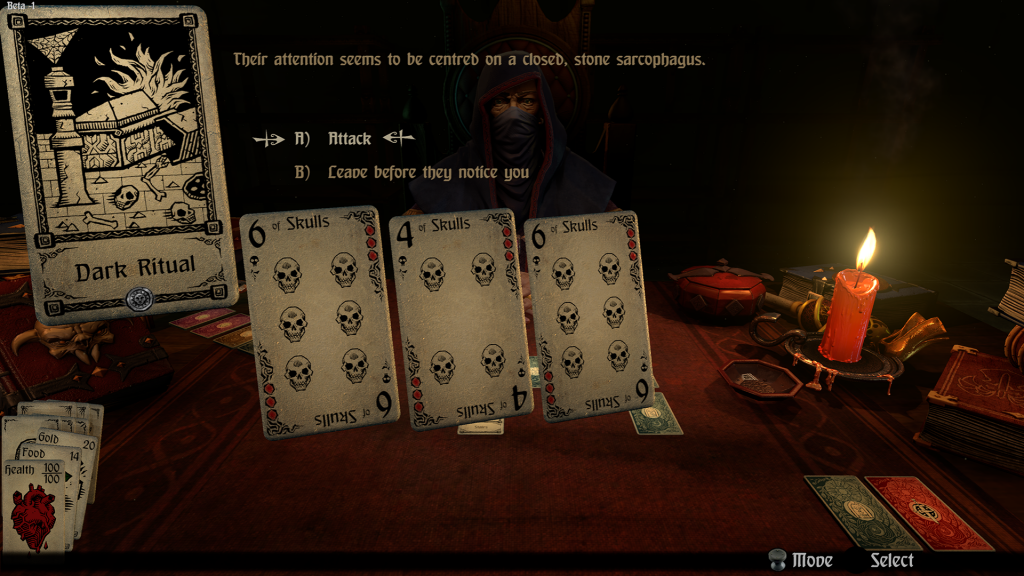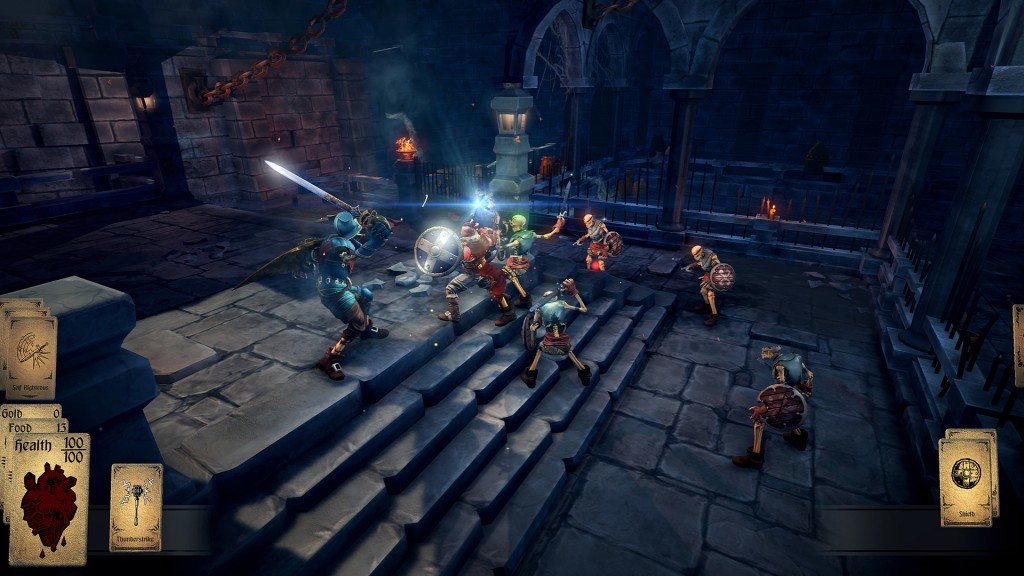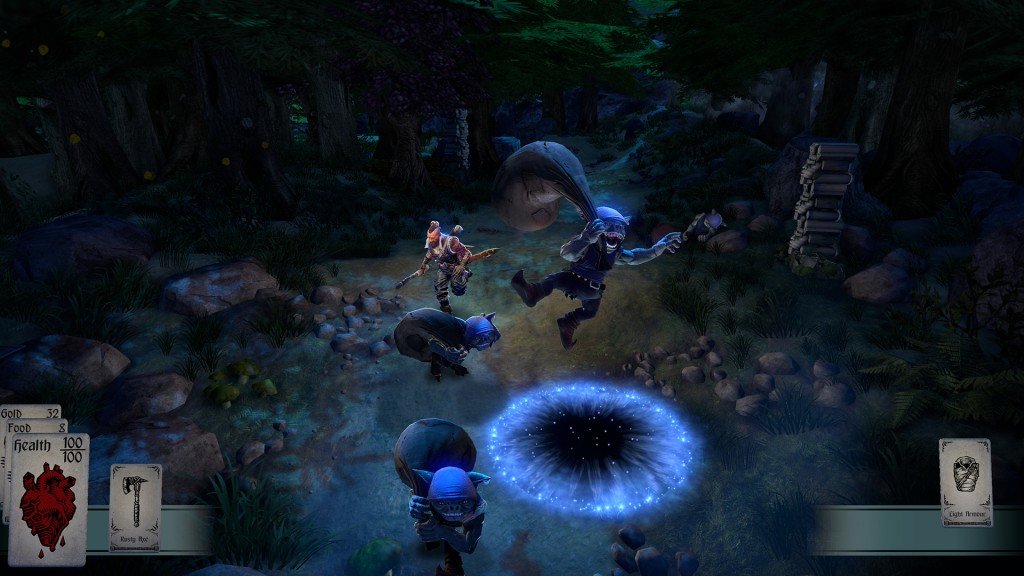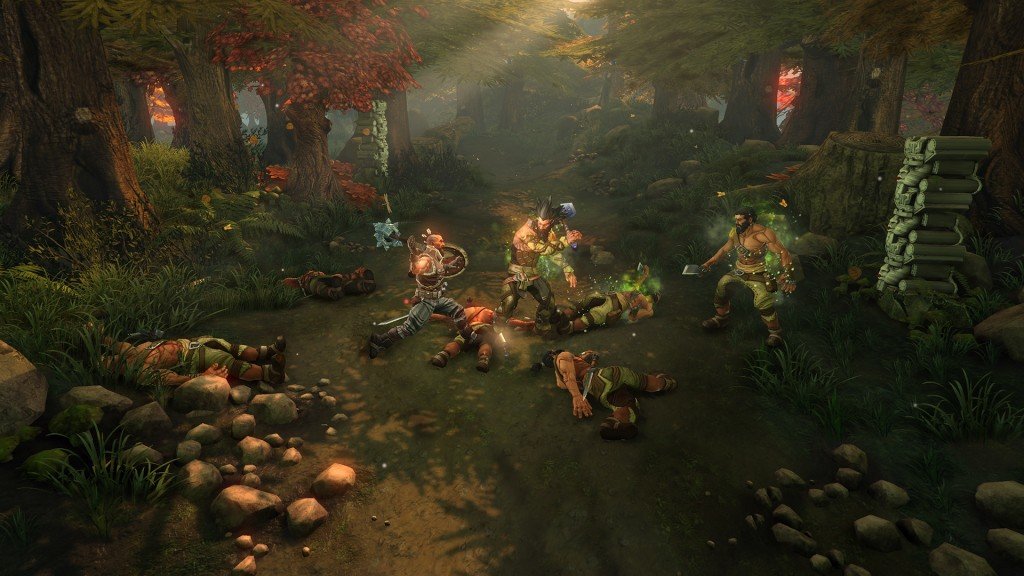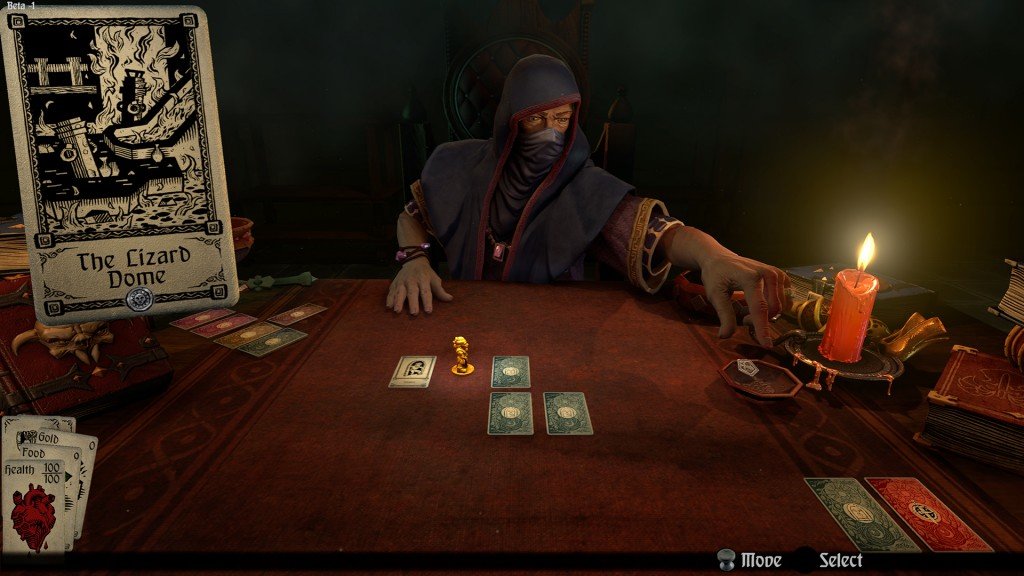Are we pitiful mortals ever truly in control of our destinies? Are we predestined to walk along the path that some higher power lays out for us? If Hand of Fate has anything to say about this philosophical question, it’s that our insignificant lives are at the mercy of a random number generator.
Hand of Fate is a Kickstarted indie game from Defiant Development. Part collectible card game, part deck-building game, and part action RPG, Hand of Fate is a card game brought to life. Think 2009’s Duels of the Planeswalkers, but with less strategy and more real-time combat.
Players begin by taking a seat across the table from the Dealer, an enigmatic figure that speaks in riddles and loves to repeat the same lines of dialogue over and over again. Thankfully, his animations are smooth and the voice work is pretty solid. Defiant is (smartly) using him as the face of the game. The dealer is the one flash of personality in an otherwise vanilla fantasy universe.
Hand of Fate launches with two modes: story and endless. Story mode takes players across 13 rounds of the game, against the Dealer’s card-based servants. After every three victories, players and enemies alike get permanent buffs. Otherwise, all progress is reset upon death and completion of each round. Endless mode is for fans of a pure dungeon crawl. Like the name suggests, players go through an endless round of the game, getting points for items collected, enemies killed, and floors descended.
Before starting each round, players build their own equipment deck and encounter deck to bring to the table. An equipment deck is made up of weapons, armor, and artefacts (special abilities, essentially). The equipment in this deck affects what items show up at vendors as well as what’s available to draw when given the opportunity. Encounters are just that– a number of unique situations which can end in a few different ways, based on your choices: combat, curses, damage, gold, or tokens which can be redeemed for more cards. To get new equipment and encounters, players must “beat” encounters in their decks. This means, most times, to simply get a few lucky rolls in a row. Particularly nasty offenders require two or three random choices, with 50% or 25% probability of success.
Here’s where my issues with Hand of Fate begin. Despite the liberal use of the words “fate” and “destiny,” the game depends heavily on a random number generator in place of actual gameplay. For example: your hero comes across an encounter titled “Angry Mob.” These starving villagers swarm you and to survive you– no, you don’t fight them off or platform across the rooftops– you pick from a grouping of four cards that can say either “success” or “failure.” These four cards are shuffled, and you pick one. At random. At this point, I had great weapons, armor, and artefacts. I was blazing through the real-time combat encounters, and then I picked a failure card at random for this “Angry Mob” encounter. I lost most of my health and all of my gold. All because of a dice roll. A roll I had no idea was coming, and couldn’t opt out of. I died shortly after.
Probability is a tricky gameplay mechanic. Random chance can make a game thrilling, tense, and dynamic. In X-COM: Enemy Unknown, I got nervous even when my sniper was lining up a shot with a 90% hit chance. The big difference here is that Hand of Fate requires less strategy and much more luck. A good deal of encounters force the player into these random chance situations, and the encounters are almost always face down on the game board until you land on them. If these encounters could be avoided, or at least prepared for, that would be strategic.
Near the end of the game, I found myself opting out of any encounter I could, just to avoid taking my chances with the random number generator. At best, the game would give me a 75% chance of success for the easiest situations. To add insult to injury, some events shuffle the cards so slowly that you can follow the success cards with your eye. Others, paradoxically, move so fast that all you can do is choose at random.
Each move from card to card costs food, so it pays even more to be stingy. Move without food, and you lose health. This mechanic stifled my motivation to explore, especially because even backtracking costs food. Some dungeon layouts are devious, placing their entrances and exists in such ways that exploration simply costs too much food. I understand the motivation and intention behind this choice, but Hand of Fate is an RPG that punishes as much as it rewards for going off the beaten path.
That’s not to say that Hand of Fate is without merit. The real-time combat is a fun break from the plodding tabletop portions. It’s a combo-counter system lifted straight from Shadow of Mordor (which in turn was lifted from Arkham Asylum). Some of the weapons and abilities can be fun, but most of the time I could mash buttons and get through relatively unscathed. If you have good luck with equipment draws, you can be overpowered within the first few turns of a round and the enemies become toothless. On the other hand, you can lose your best weapon and half your health after only a couple of bad dice rolls.
Hand of Fate’s coolest feature are the transitions into the combat mode. When each fight starts, the cards fly onto the battlefield and become 3d models of what they depict. This is a cool effect that really does bring the cards to life. Sadly, these transitions are usually choppy and break the seamless experience that Defiant was aiming for.
The combat is also missing any real layer of strategy, mostly because players are locked into fights before they have a chance to re-arrange their equipment. Have a giant cleaver that does double damage to ratmen? You better hope you have it equipped before you run into them, otherwise you won’t have access to it. This sort of baffling design decision is antithetical to the core creed of RPGs: upgrade your equipment and use strategic character builds to defeat different enemies. It isn’t even enough to put the weapons in your equipment deck– I went multiple rounds without ever even seeing my fancy new helmets or axes.
While there are certainly some flaws with the game design, the review code I played was also rife with graphical glitches and performance issues on the Playstation 4. A really cool shuffling animation the dealer does at the end of each round is barely functional. Screen tearing and slow down are common as well, even during small battles. During the tabletop portion of the game, they are forgivable. When they happen during the combat, however, it’s tough to fight both the game engine and wonky camera at the same time.
When the visuals are running smoothly, I found that the combat environments were lush and detailed. The Dealer’s table is also crammed with great touches. The beads on his wrist shake with his every gesture. A candle flickers, and the wax glistens in the orange light. A lone spider skulks over a pile of books from time to time. The clink of a token dropping in the player’s cup immensely restrained and satisfying.
In the end, Hand of Fate is a promising combination of genres that depends too much on random chance and marginalizes strategy. The fun combat can’t save some awkward design decisions, technical hiccups, and infuriating dice rolls. Fans of collectible card games will enjoy Hand of Fate, but anyone looking for substantial strategy and RPG elements should find another dealer.
This review is based on a review copy of the PlayStation 4 version of Hand of Fate developed by Defiant Development.
- Unique combination of genres
- Beautiful, detailed envrionments
- Nuanced sound design
- Frustrating probability-based gameplay
- Barebones RPG mechanics
- Technical issues and graphical glitches

